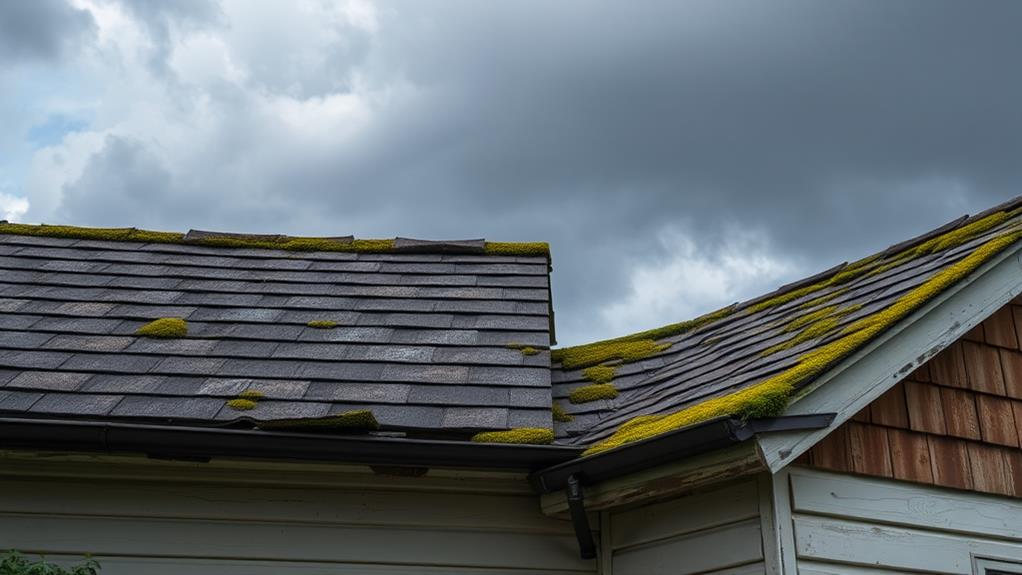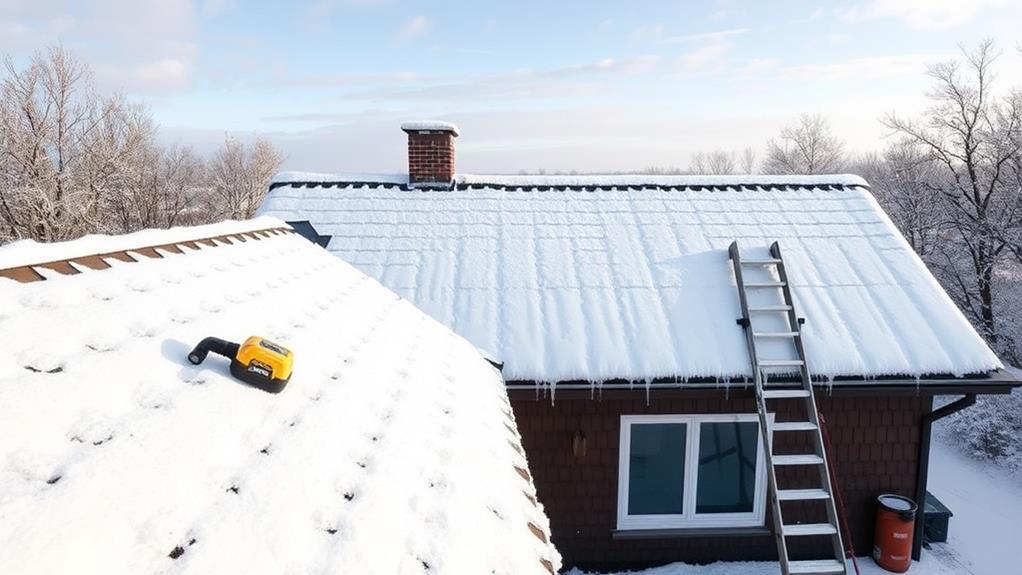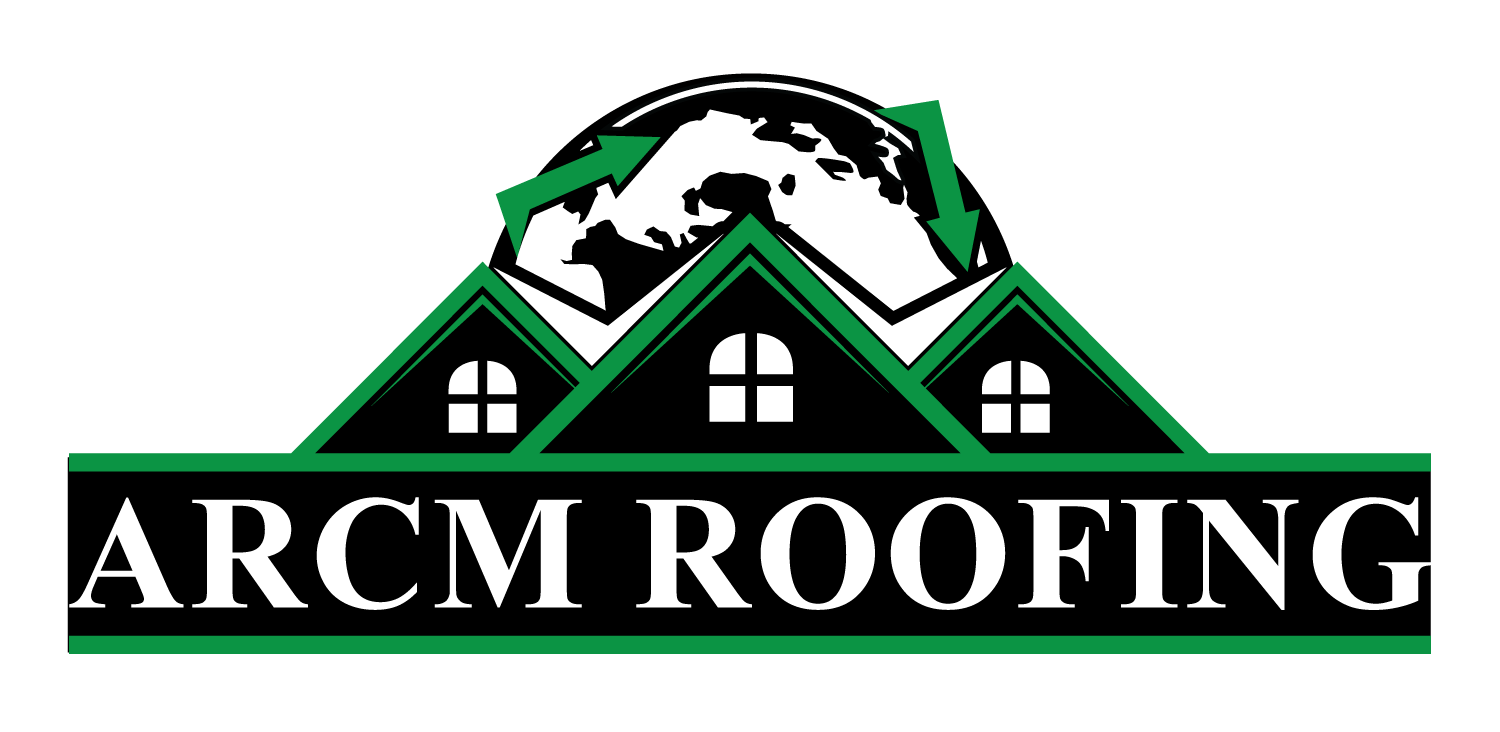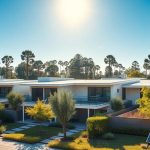Weather impacts residential roofs greatly by imposing material-specific challenges that can deteriorate structural integrity and aesthetics over time. Asphalt, wood, and metal are susceptible to warping, corrosion, and damage from hail and high winds, which can expose underlying layers and lead to water infiltration. Sunlight and moisture further contribute to color fading and mold growth, endangering both material strength and visual appeal. Employing fade-resistant materials and conducting regular maintenance mitigate these issues, improving durability and longevity. Understanding these effects and adopting preventative measures can preserve your roof's condition, offering insight into how to safeguard your home effectively.
Roofing Highlights
- Weather conditions can cause damage to roofing materials, leading to potential leaks and structural issues.
- UV rays and severe weather contribute to fading of roof and siding colors, diminishing aesthetic appeal.
- Moisture infiltration fosters mold growth, compromising roof integrity and health safety.
- High winds and hail can dislodge shingles and dent roofing, increasing vulnerability to weather elements.
- Regular maintenance and using quality materials extend the lifespan of roofs, mitigating weather impact.
Effect on Home Exteriors

The exteriors of homes are susceptible to a range of weather-induced challenges, including material damage from severe conditions such as hailstorms and high winds, which can compromise structural integrity. For instance, hailstones commonly associated with thunderstorms in regions like Colorado can punch through solid objects, leading to immediate loss of shingles and further exposing the roof to potential leaks.
Additionally, seasonal fluctuations in sunlight and precipitation can lead to noticeable color fading, impacting the aesthetic appeal and potential value of the property. Moreover, persistent moisture exposure not only accelerates deterioration but also encourages mold growth, posing health risks to the occupants and necessitating regular maintenance to preserve both the appearance and safety of residential structures.
Weather-Induced Material Damage
Countless homes experience various degrees of damage to their exteriors due to adverse weather conditions. The onslaught of rain, snow, wind, and hail can lead to significant material degradation, threatening both the structural integrity and aesthetic appeal of residential properties.
Roofing materials, such as asphalt shingles, wood, and metal, often bear the brunt of weather-induced wear and tear. For instance, prolonged exposure to moisture can lead to the warping of wooden structures or corrosion in metal roofing. Additionally, the impact of hail can cause physical denting, thereby compromising protective barriers and allowing infiltration of water, which may result in leaks and further damage.
Furthermore, high winds can dislodge shingles, expose underlayers, and create vulnerabilities that necessitate prompt attention. These weather-related threats highlight the necessity of using robust, weather-resistant materials when constructing home exteriors.
Considerations such as selecting suitable roofing materials, ensuring adequate insulation, and implementing regular maintenance can mitigate the long-term impacts of weather on homes. By focusing on materials designed to withstand local climatic conditions and by engaging in proactive repairs, homeowners foster a sense of community resilience, ensuring that their properties remain a safe haven against nature's unpredictability.
Seasonal Color Fading
Every season introduces unique challenges to home exteriors, one of which is the gradual fading of color due to weather exposure. This phenomenon is particularly noticeable on residential roofs and siding, where prolonged exposure to sunlight, rain, and wind can lead to significant color deterioration over time.
Roofs, often the first line of defense against the elements, are vulnerable to the intensity of UV rays, which break down pigments in paints and materials, leading to a bleached and aged appearance. This not only affects the aesthetic appeal of the property but can also result in a less cohesive exterior look, impacting the homeowner's sense of pride and belonging within their community.
To mitigate color fading, homeowners can invest in high-quality, fade-resistant materials designed to withstand harsh seasonal conditions. Regular maintenance, including cleaning and protective coatings, is crucial in preserving the vibrancy of exterior colors. Additionally, selecting paints and finishes specifically formulated for UV resistance can greatly extend the lifespan of the roof's color.
Ultimately, understanding and addressing the impacts of seasonal color fading can help homeowners not only maintain their property's curb appeal but also guarantee its longevity within the neighborhood's architectural harmony.
Moisture and Mold Growth
When moisture infiltrates residential roofs, it can create an ideal environment for mold growth, posing significant challenges to home exteriors. Mold thrives in damp conditions, often forming in less visible areas such as under shingles or in attics. This not only compromises the roof integrity but also poses risks to a home's overall structural health, potentially requiring costly repairs.
Moisture not only fosters mold but can lead to wood rot beneath shingles, weakening the overall support structure of the roof.
Furthermore, mold growth is not merely an aesthetic concern; it can degrade roofing materials, including shingles and underlayment, leading to leaks and further damage. The presence of mold can also affect the exterior facades—such as siding—if it spreads, necessitating thorough exterior renovations. Continuous exposure to moisture without adequate ventilation or proper sealing solutions compounds these issues, leading to persistent and pervasive damage.
To mitigate this, regular inspections and maintenance are paramount. Homeowners should collaborate with experts to guarantee adequate ventilation and moisture barriers are in place. Additionally, timely repairs to damaged shingles and flashing can prevent moisture ingress, shielding your home against mold proliferation and ensuring long-lasting protection.
Benefits

Understanding the benefits of addressing the impact of weather on residential roofs highlights key advantages, such as improved energy efficiency which can lead to reduced utility costs. Retaining residential roofing expertise guarantees your roof is equipped to handle various weather conditions, boosting its durability and performance.
Properly maintained roofs also enhance property value through increased curb appeal and structural integrity, making a home more attractive to potential buyers. Additionally, investing in preventative measures and routine maintenance increases the lifespan of the roof, reducing the need for frequent repairs and replacements.
Improved Energy Efficiency
For homeowners, upgrading their roofs with energy-efficient materials can result in substantial benefits, especially regarding energy consumption. The most immediate advantage is a reduction in energy costs, as efficient roofing materials often possess reflective properties that minimize solar heat absorption during warmer months. This lessens the load on air conditioning systems, thereby decreasing electricity usage and bills.
Furthermore, during colder months, roofing upgrades such as increased insulation can prevent heat loss, ensuring indoor environments remain comfortably warm without excessive heating demands.
An energy-efficient roof also promotes environmental sustainability by easing the strain on energy resources. These roofing systems often incorporate materials that are eco-friendly or recycled, further contributing to reduced ecological impact. The integration of modern technologies, such as cool roofs or green roofing solutions, aligns seamlessly with the values of environmentally conscious communities.
Additionally, roofs specifically designed for energy efficiency can contribute to a broader sense of community. They set a standard for responsible living, fostering a sense of pride and belonging amongst neighbors who value sustainability. By adopting these advancements, homeowners not only contribute to their own comfort and savings but also become part of a larger movement toward a more energy-conscious society.
Enhanced Property Value
While energy efficiency offers immediate savings and environmental benefits, another significant advantage of upgrading residential roofs lies in the enhanced property value these improvements can bring. Upgraded roofing materials and technology not only elevate the aesthetic appeal of a home but also contribute to a perceived sense of higher quality and durability.
This, in turn, becomes a cornerstone in the real estate market, appealing to potential buyers who associate such enhancements with a reduced likelihood of future repairs and enhanced protection from the elements.
Moreover, energy-efficient roofing systems enhance the overall market positioning of a property. Prospective homeowners often prioritize energy savings and sustainable living, viewing these as essential factors in their purchasing decisions.
Homes equipped with features that promise lower utility bills and a reduced carbon footprint are often more attractive. As these aspects are increasingly prioritized, a state-of-the-art roofing system can serve as a symbol of responsible homeownership and environmental stewardship.
Additionally, an upgraded roof can be a focal point in property appraisals, potentially increasing appraisal values and enabling homeowners to capitalize on higher market rates. Ultimately, investing in superior roofing solutions fosters not only financial returns but also a sense of shared communal identity within environmentally-conscious communities.
Increased Roof Lifespan
One of the most crucial benefits of investing in upgraded roofing is the increased lifespan it offers. Advanced roofing materials and technologies have transformed how effectively roofs can withstand the adverse effects of weather, ensuring longevity and resilience. With the advent of innovative solutions like impact-resistant shingles, fortified underlayment, and superior sealing techniques, homeowners can now expect their roofs to endure harsher conditions than ever before. This durability not only provides peace of mind but also fosters a sense of belonging in communities where shared concerns about severe weather are prevalent.
Moreover, extended roof longevity drastically reduces the frequency and costs associated with replacements, reinforcing a home's structural integrity for years to come. By opting for such improvements, residents align with a collective movement towards sustainable living, contributing to environmental preservation by minimizing waste and resource consumption. In addition, the enhanced durability of upgraded roofs often translates into fewer repair needs, promoting uninterrupted comfort and security within the home environment.
Ultimately, investing in a long-lasting roof signifies more than a mere material upgrade; it's a commitment to safeguarding one's home and community from unpredictable weather's challenges, thereby nurturing a culture of longevity and resilience.
Winter Maintenance Tips Included

As the winter months approach, homeowners must turn their attention to essential roof maintenance tasks that can mitigate potential weather-related damage, including the prevention of ice dam formation, the efficient clearing of snow, and vigilant checking for water leaks that may become more evident during freeze-thaw cycles. These proactive measures not only protect the structural integrity of a home but also offer peace of mind amidst harsh winter conditions. Below is a table summarizing these critical maintenance tips and their significance:
| Maintenance Tip | Action Step | Importance |
|---|---|---|
| Prevent Ice Dams | Guarantee proper attic insulation and ventilation | Protects roof from water damage |
| Clear Snow Efficiently | Use a roof rake or hire a professional | Prevents excessive weight and roof collapse |
| Check for Water Leaks | Inspect attic and ceilings for signs of moisture | Identifies issues early to avoid extensive repairs |
Prevent Ice Dam Formation
To effectively prevent ice dam formation on residential roofs, it is crucial to understand the mechanics behind their development and implement targeted maintenance strategies. Ice dams form when accumulated snow melts on the roof due to inadequate insulation or ventilation, only to refreeze at the eaves, creating a barrier that prevents further runoff. Consequently, water backs up under shingles, potentially causing leaks and structural damage.
Homeowners can adopt several proactive measures to mitigate ice dam risks. Insulating your attic properly is paramount, as it minimizes heat loss that can prematurely melt snow. Experts recommend that homeowners verify their attics' R-value, a measure of insulation efficacy, aligns with regional guidelines.
Equally critical is maintaining effective attic ventilation to facilitate uniform temperature distribution, thereby reducing roof surface variation that contributes to melting.
Regularly inspecting and maintaining gutter systems can also play a significant role in ice dam prevention. Properly clean gutters and downspouts can facilitate water drainage, mitigating the risk of ice development. Additionally, professionals can install roof-specific heating cables, designed to sustain adequate temperatures for snowmelt, further circumventing ice dam formation. These thorough measures, meticulously executed, foster a more resilient and weather-ready home environment, reinforcing homeowners' sense of security and belonging.
Clear Snow Efficiently
When winter arrives with its heavy snowfalls, efficiently clearing snow from residential roofs becomes an essential maintenance task for homeowners to protect their property. Accumulated snow, if not managed prudently, can exacerbate stress on the roof structure, leading to potential damage. Utilizing effective snow removal techniques not only preserves the integrity of the structure but also instills a sense of preparedness and responsibility within the community.
To begin with, homeowners should invest in a quality roof rake designed specifically for snow removal. These tools allow individuals to clear snow while standing safely on the ground, minimizing the risk of injury. Extending this approach to the use of telescopic poles can further reduce direct contact with icy surfaces, thereby ensuring safety.
Additionally, attention should be paid to snow removal timing; addressing the task promptly after each snowfall serves to prevent excessive accumulation and the complications that come with it.
For those desiring more thorough strategies, consulting with snow removal professionals can offer insights and tailored solutions. These experts provide services such as well-timed snow removal and ice melt application, reinforcing a collective commitment to maintaining safe, long-lasting roofing systems.
Check for Water Leaks
Winter months can be particularly treacherous for residential roofs, making it crucial to diligently check for water leaks as part of routine maintenance. The heavy burden of snow and ice can compromise the integrity of roofing materials, leading to potential water penetration through vulnerable areas.
To mitigate the risks associated with water infiltration, homeowners are encouraged to carefully inspect their attic spaces for any signs of moisture or water stains. These indicators often suggest the presence of underlying issues that require prompt attention to prevent further damage.
A systematic approach involves examining the roof for any missing or damaged shingles that could allow water entry. Special attention should also be given to the flashing around roof penetrations such as chimneys, vents, and skylights, as these areas are particularly susceptible to leaks. Addressing these issues promptly not only safeguards the structural integrity of the home but also maintains the comfort and safety of its inhabitants.
Engaging in regular inspections and collaborating with qualified roofing professionals guarantees that even the smallest leaks are identified and rectified swiftly. This proactive strategy allows homeowners to continue feeling secure and connected to their spaces, fortifying a sense of belonging within their community.
Connect With Us
Looking to protect your home from the unpredictable elements? Don't wait until it's too late! Connect with us today to safeguard your roof against the damaging effects of weather.
Our expert team is ready to provide you with excellent roofing solutions tailored to your needs. Call us now at (303) 306-8384 to schedule a consultation and make certain your home stays safe and dry all year round. Your roof is our mission!
Roofing FAQ
How Does Heavy Rainfall Impact the Lifespan of Residential Roofs?
Heavy rainfall can markedly decrease the lifespan of residential roofs by promoting water infiltration, leading to moisture buildup, structural damage, and mold growth. Regular maintenance and inspections foster a sense of security and community cohesion.
What Are the Signs of Weather-Related Roof Damage to Watch Out For?
Signs of weather-related roof damage include missing or cracked shingles, water stains on ceilings, mold growth, and increased indoor humidity. Addressing these issues promptly fosters community resilience and protects the integrity of one's home environment.
Can Extreme Heat Cause Roofing Material to Deteriorate Faster?
Extreme heat accelerates the deterioration of roofing materials by causing thermal expansion, cracking, and warping. This process weakens the roof's structural integrity. Monitoring your roof can foster a sense of community by ensuring shared safety and longevity.
How Can Homeowners Protect Their Roofs From Hail Damage?
Homeowners can safeguard their roofs from hail damage by installing impact-resistant materials, performing regular inspections, and maintaining surrounding trees. Engaging in community discussions on best practices enhances protection and fosters a sense of shared responsibility and belonging.
What Are the Costs Associated With Repairing Weather-Related Roof Damage?
Repairing weather-related roof damage often incurs costs ranging from $300 to $5,000, depending on the severity of the damage. Homeowners must consider labor, material, and potential additional expenses to guarantee thorough protection for their homes.




